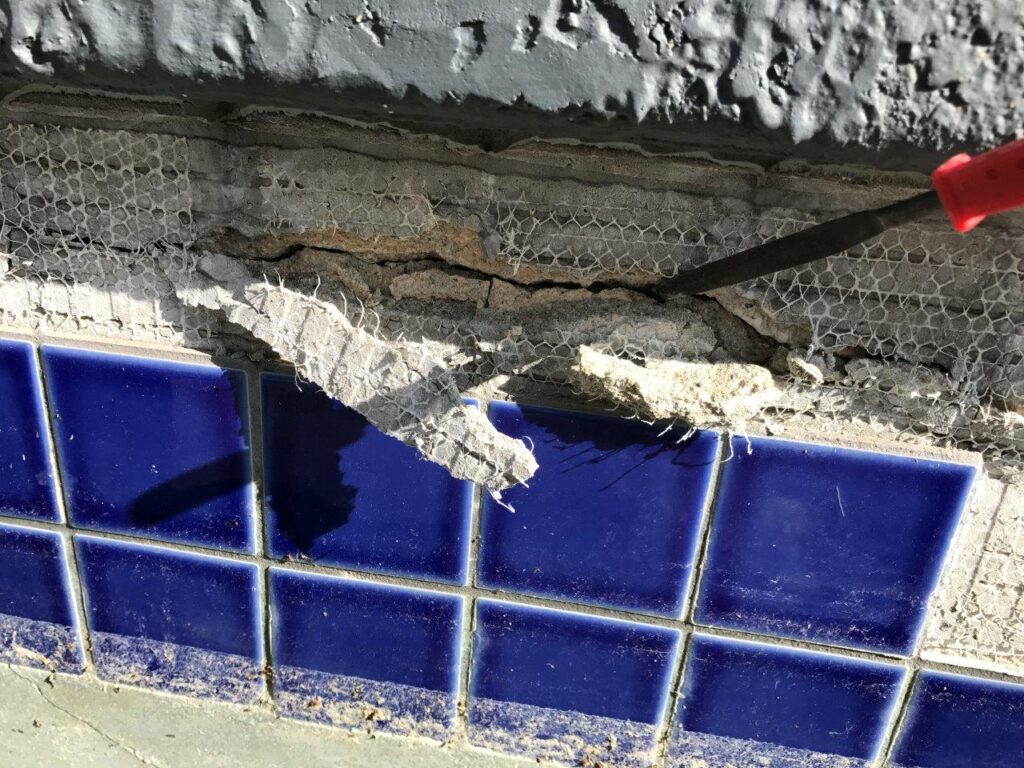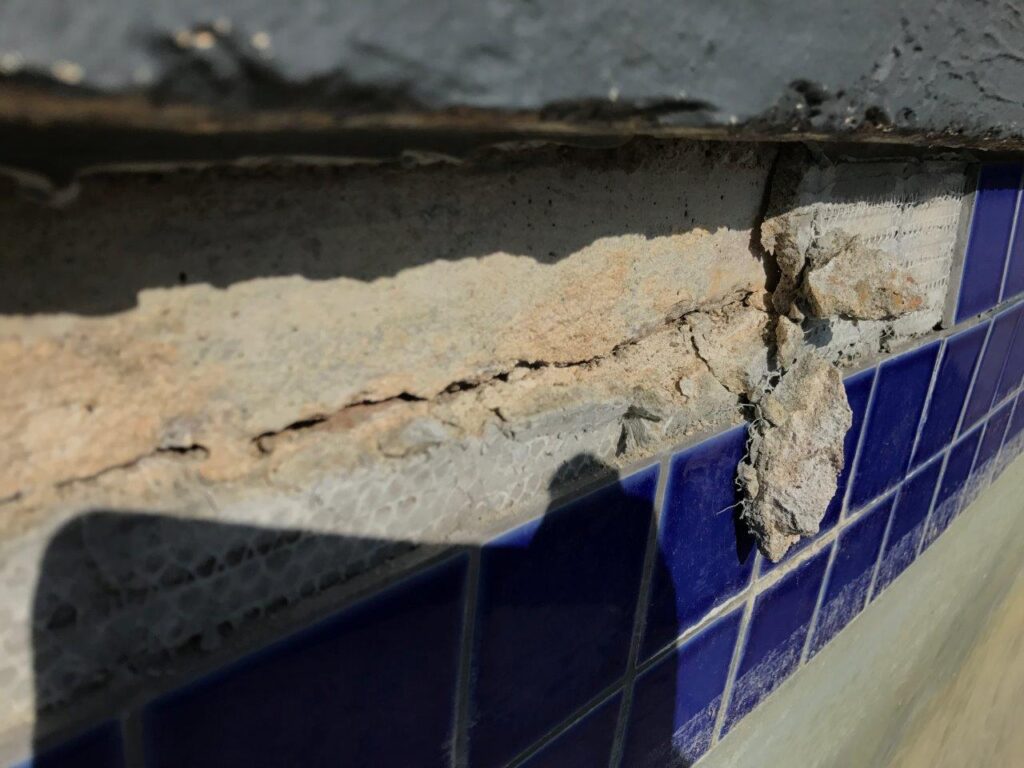Lipstick Repairs & Transfer Disclosures


There are times that a fresh plaster job and new tile can make a worn-out pool look new again, much to the pool owner’s delight. But if the cosmetic work was done to hide more serious issues ahead of a real estate transaction, an all-too common practice, Scott Cohen warns, contractor and buyer beware.
By Scott Cohen
When it comes to real estate transactions, the term “transfer disclosure” might sound like paperwork your agent hands you with a stack of other forms. But in my experience as an expert witness and artisan pool builder, what’s not disclosed in these documents can come back to bite everyone involved—especially contractors.
A real-estate transfer disclosure statement (TDS), is a document used during a real- estate transaction to inform buyers of the true condition of the property sold by an owner. Unless a seller is exempt, they must legally deliver a disclosure form to all prospective buyers.
For some sellers, however, the temptation to conceal problems can be too much to resist. Let me paint a common picture: a homeowner calls you for a swimming pool “remodel.” You get there and quickly see the pool shell has cracks. This isn’t a simple facelift; it’s a candidate for a deeper repairs, or even a pool tear-out and replacement in severe cases.
But the homeowner has a different agenda. “Just re-tile and re-plaster it,” they say. “Make it look good—I’m putting the house on the market. I won’t hold you responsible.”
Here’s where that little voice in your head should be yelling: Don’t do it!
GREAT TEMPTATIONS
Yet too often, despite what should be obvious risks, a pool contractor takes the bait. The job goes forward with a $30,000 cosmetic “fix” on a pool that needs $100,000 worth of structural repairs. It looks great—for about six months. The home sells, the disclosure form vaguely mentions the pool remodel, but conveniently omits that the pool shell was cracked and leaks were only cosmetically patched.
Months later, the phone rings again—only this time, it’s the new homeowner’s attorney. The pool structure is failing and somebody is going to pay to fix it. Because the structural problems were not spelled out in the TDS, that somebody may very likely be you.
In California, and many other states, contractors can be held liable up to four years for obvious (patent) defects and up to ten years for hidden (latent) ones. Unless your contract states otherwise, it doesn’t matter, you may still be in the chain of liability. And the new owner? They don’t have to give you a chance to fix it. They just sue—and yes, they often collect. And, to make matters worse, your insurance company may not cover you.
In one case I consulted on, the pool contractor was brought in to hide some cracks, redo some tile work, re-plaster the pool, and basically put lipstick on a pig. Nothing was disclosed in the TDS.
Once the homeowner moved in, he noticed the pool was losing water and discovered delaminating tiles or tiles falling off, cracks developing in the pool shell, and he found out from a previous pool servicemen that the pool had been a disaster beforehand but had been dolled up for the sale of the house.
This is a textbook example of a major structural crack that was covered up in a cosmetic repair.
Unfortunately for the contractor that did the work, the new homeowner was an attorney and was prepared to press the issue in court. The pool was unsalvageable and the cost to remove and replace it was charged back against the homeowner that sold the pool, the realtor that sold the house and the pool contractor.
This doesn’t just apply to pools. I’ve seen foundation cracks hidden under new carpet, rotting fences temporarily propped up for an open house, and trees installed in locations where their roots are guaranteed to destroy patios and pipes—because “we’re only going to live here a few years.”
That kind of short-term thinking isn’t just unethical—it’s legally perilous.
PREVENTION IS THE CURE
On the most basic level, the best advice is simply to fix it right or don’t fix it at all. Cosmetic cover-ups might buy someone time for a sale, but they can cost you your reputation and a boatload of legal fees.
Be sure to let the homeowner know the scope of your warranty. As an example, you can tell the homeowner we’ll do an epoxy-injection on the cracks, but we don’t warranty that it will actually work. The real way to correct this is to tear this out and replace it.
So, you’ve given the homeowner an option, they choose which one they want, but if they choose on the epoxy injection, you just have to make sure that your warranty is clear, that it’s covered or not covered.
Doing quality work isn’t just about craftsmanship—it’s about integrity. That means considering the next person in line, not just the client in front of you. And if a client ever says, “Don’t worry, I won’t hold you responsible,” remember: that may be the most dangerous sentence in construction.
Scott Cohen is a licensed contractor, artisan builder, and expert witness in the outdoor living industry. He’s seen more than his share of lipstick jobs—and the lawsuits that follow.












